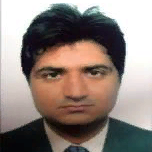
Muhammad Shakir
Work place: School of Control Engineering, Harbin Institute of Technology Harbin, 150001, China
E-mail:
Website:
Research Interests: Data Structures, Data Structures and Algorithms, Computer Architecture and Organization
Biography
Muhammad Shakir received his B.E degree in computer systems engineering from Quaid-e – Awam University of engineering science and technology Nawabshah, Pakistan in Feb 2016. In September 2016 he joined the school of Astronautics major in control science and engineering at Harbin Institute of technology where he is now a master’s student. He has published two technical articles, conference proceedings. His current research interest include cloud computing and data driven fault diagnosis.
Author Articles
Comparison of Fog Computing & Cloud Computing
By Vishal Kumar Asif Ali Laghari Shahid Karim Muhammad Shakir Ali Anwar Brohi
DOI: https://doi.org/10.5815/ijmsc.2019.01.03, Pub. Date: 8 Jan. 2019
Fog computing is extending cloud computing by transferring computation on the edge of networks such as mobile collaborative devices or fixed nodes with built-in data storage, computing, and communication devices. Fog gives focal points of enhanced proficiency, better security, organize data transfer capacity sparing and versatility. With a specific end goal to give imperative subtle elements of Fog registering, we propose attributes of this region and separate from cloud computing research. Cloud computing is developing innovation which gives figuring assets to a specific assignment on pay per utilize. Cloud computing gives benefit three unique models and the cloud gives shoddy; midway oversaw assets for dependable registering for performing required errands. This paper gives correlation and attributes both Fog and cloud computing differs by outline, arrangement, administrations and devices for associations and clients. This comparison shows that Fog provides more flexible infrastructure and better service of data processing by consuming low network bandwidth instead of shifting whole data to the cloud.
[...] Read more.Other Articles
Subscribe to receive issue release notifications and newsletters from MECS Press journals